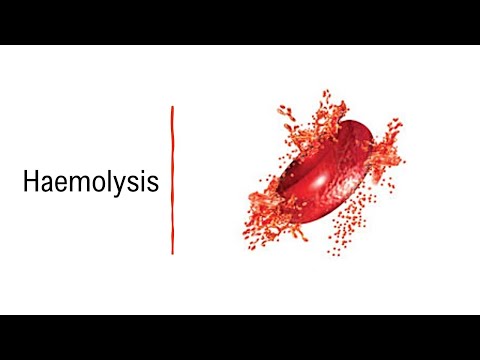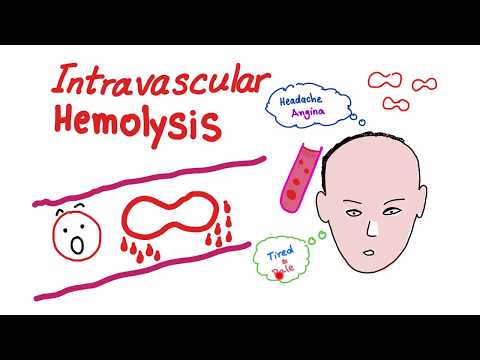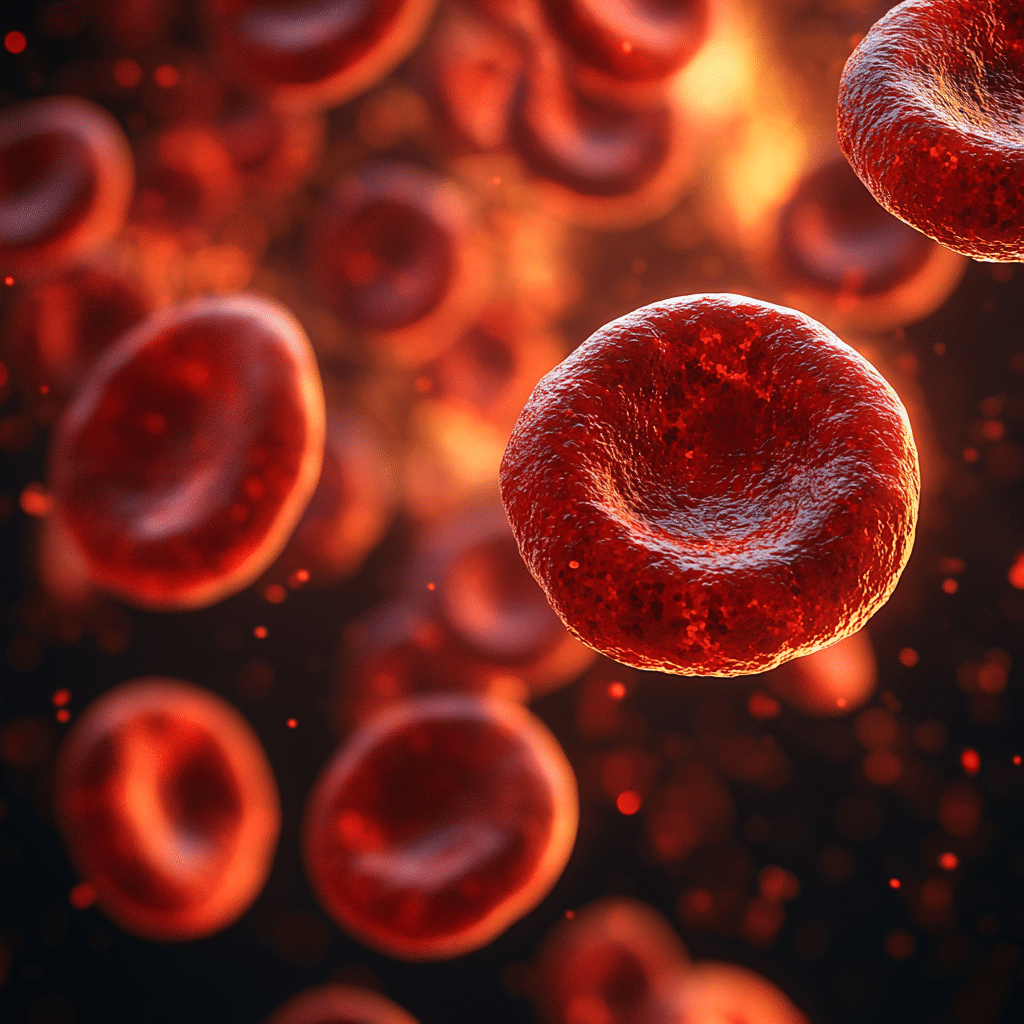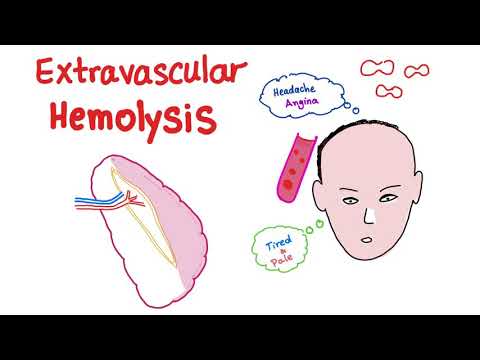Let’s be honest: most of us aren’t scientists. We’re gym rats, fitness enthusiasts, or everyday folks trying to stay healthy and jacked. But understanding health issues like haemolysis can seriously impact your fitness journey. Haemolysis, the breakdown of red blood cells (RBCs), is more than just a scientific term thrown around in medical books. It’s a process that can profoundly affect your overall health, athletic performance, and fitness goals. So buckle up! We’re diving into the process of haemolysis and why it matters to you—yes, even to aspiring muscle gods.

Understanding Haemolysis: The Process and Its Mechanisms
At its core, haemolysis refers to the destruction of RBCs, leading to the release of hemoglobin into the bloodstream. Several factors can stir up this process, like immune responses, infections, and various underlying medical conditions. Think of your red blood cells as small delivery trucks transporting oxygen throughout your body. When these trucks break down faster than they can be replaced, you end up with a whole host of issues. Not exactly ideal if you’re looking to crush it in the gym!
Biochemically, haemolysis kicks off when something disrupts the fragile membrane of these red blood cells. Imagine a punctured tire: air (or in this case, hemoglobin) escapes quickly, and the vehicle (your body) can’t run properly. Factors that can trigger haemolysis include oxidative stress, infections like malaria, or autoimmune responses where your body mistakenly attacks its own cells. Ignoring this breakdown can lead to major health complications and impact your performance—both in the gym and in life.

Top 5 Possible Health Implications of Haemolysis
Now that we have an idea of what haemolysis is, let’s talk about its implications. Here are five key areas where this red blood cell mangling can lead to serious health concerns:
1. Hemolytic Anemia
When talking about haemolysis, hemolytic anemia is the heavyweight champ in the ring. This occurs when your body destroys RBCs faster than the bone marrow can produce them. You may have heard of autoimmune hemolytic anemia (AIHA) or sickle cell disease. Patients suffering from AIHA often report fatigue and weakness, making their workout routine feel like climbing Everest. It’s crucial for anyone pursuing fitness goals to understand how these conditions can sap your energy and stamina.
2. Impact on Hemodialysis Patients
If you or someone you know is undergoing hemodialysis, haemolysis is an issue that needs addressing. Certain techniques can lead to increased RBC breakdown, making patients reliant on transfusions, which isn’t exactly optimal for building muscle. According to a study published in the Clinical Journal of the American Society of Nephrology, some patients experience notable hemolysis, raising cardiovascular risks. If you’re lifting weights while managing a condition that affects your red blood cells, keep an eye on your overall health metrics.
3. Gastroenterological Disorders and Haemolysis
In gastroenterology, disorders like celiac disease can deplete essential nutrients, leading to increased haemolysis. The American Journal of Gastroenterology found cases where untreated celiac resulted in significant hemolytic episodes due to nutrient malabsorption. If you’re feeling run-down despite eating healthy foods, you might want to consider gastrointestinal issues as a potential factor in your fitness journey. After all, gut health is crucial to muscle growth and overall wellness.
4. Neonatal Hemolytic Disease
Moving on, we have neonatal hemolytic disease, a serious condition often resulting from Rh incompatibility between mother and child. The Journal of Perinatology emphasizes the need for prompt management; otherwise, it can lead to dire consequences. Yes, not every health issue directly affects athletic aspirations, but understanding these conditions can make you a more informed individual, shaping how you approach fitness and health as you age.
5. Drug-Induced Hemolysis
Certain medications can also mess with your red blood cells. For example, drugs like penicillin and primaquine can induce hemolysis, stirring up conditions like drug-induced immune hemolytic anemia. Research highlighted in the British Journal of Clinical Pharmacology shows that these medications can exacerbate hemolysis in susceptible individuals. If you’re taking any medications, consult your doctor about possible side effects. You don’t want to sabotage your workouts because of a prescription!

Investigating the Preventative Measures Against Haemolysis
So how do we tackle this monster called haemolysis? Implementing preventative measures is key. Regular blood tests can help identify abnormalities early on, especially for high-risk populations like those undergoing hemodialysis. Knowing your health markers isn’t just a bonus; it’s essential for making informed decisions regarding your workouts and lifestyle.
Education also plays a vital role. If you know the risks involved with certain medications or dietary choices, you can proactively manage your health. Identifying potential red flags—like unexplained fatigue or weakness—can empower you. After all, knowledge is power when you’re crafting a shredded physique!

The Future of Haemolysis Research and Treatments
No doubt, the future of haemolysis research is bright! Cutting-edge research is making strides toward innovative treatments that minimize the health implications of this condition. Advanced gene therapies and monoclonal antibodies are on the rise, targeting specific pathways involved in haemolysis. For instance, Rituximab, a monoclonal antibody, has shown promise in managing autoimmune hemolytic anemia, enhancing patient outcomes as detailed in a Hematology Oncologist study.
Moreover, novel hemodialysis techniques may reduce haemolysis cases in the coming years. Picture a world where tailored treatments, based on individual factors, lead to improved health outcomes. This isn’t just wishful thinking; it’s where medicine is headed. And as we deepen our understanding of haemolysis and its implications, we pave the way for healthier journeys and better quality of life for people everywhere.
In conclusion, haemolysis isn’t just a term tucked away in a medical textbook; it’s a vital aspect of health that can influence your physical performance. Stay informed, take preventative measures, and push your limits while keeping your health in check. Now go get shredded, and never back down from a challenge!
Whether you are looking to build muscle mass, gain endurance, or improve your overall health, remember: the journey starts with knowledge. Keep grinding and stay motivated, because every rep counts!

Haemolysis: Fun Facts and Trivia
The Basics of Haemolysis
Did you know that haemolysis, the breakdown of red blood cells, can actually throw your whole body out of whack? It occurs naturally in the body but can also be triggered by various factors, such as certain medical conditions and even foods. Interestingly, haemolysis can be influenced by temperature; the red blood cells have specific conditions they thrive in. Similar to how the moon’s phase can change the tides, haemolysis can change the balance of our health. Wondering What kind Of moon Is it tonight? Checking the lunar phases can be a fun way to connect with nature as your body adjusts to these internal shifts!
Symptoms and Conditions
When haemolysis kicks in, it may lead to symptoms like fatigue, jaundice, or dark urine. In severe cases, individuals could face dangerous conditions like anemia. For all the sports enthusiasts out there, did you know that high-intensity exercises can sometimes lead to mini episodes of haemolysis? In fact, sports like running can produce mechanical stress on red blood cells, similar to how Caitlin Clark is making headlines as she transitions to the Europe League, facing her own set of challenges. While this may not be a direct parallel, it highlights how physical strain can impact our health and longevity.
Fun Links to Haemolysis and Health
Another interesting aspect to consider is the role of certain minerals, like calcium phosphate, in maintaining healthy blood cells. These compounds contribute to the overall health and vitality of our blood. And speaking of health, if you’re busy with personal care, did you know that knowing your hair type can make a big difference in your grooming routine? Much like how understanding haemolysis can help in monitoring our health, being informed about hair types allows you to choose the right products, paving a smoother path to self-care. And just like the quirky stories about celebrities, from Michael Richards to Gerald Mcraney, it’s astounding how various factors—be it fame or health—intersect in our lives.
Keep digging into the wonders of science like you’re on a new adventure, and remember, knowledge is power!



























